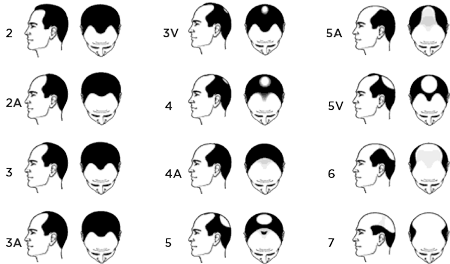Hair Loss in Men

Hair loss in men is common. Medical studies show that up to 40% of men will be losing hair by age 40. The percentage of men experiencing hair loss increases as you age.
Androgenic alopecia or genetic hair loss is the most common cause of hair loss in men. In genetic hair loss, the natural testosterone in men breaks down into DHT (dihydrotestosterone) and the DHT is not properly cleared away from the hair follicles. This leads to a progressive miniaturization of the hair follicle, leading to thinner and fewer hairs and eventually to the hair follicle dying.
Loss of hair can mean a loss of confidence at any age. Dr Pinette evaluates all types of hair loss and can review options that may work for you.
This all starts with a proper initial consultation. Each person’s medical history, hair loss history, and goals and expectations are reviewed. The scalp and hair is examined and in some cases further investigations (e.g., blood tests or scalp biopsy) might need to be done.
Dr Pinette will work together with you to create a management plan that is medically sound and meets your goals.
Of the treatments available for hair loss; any one or a combination of these treatments might be considered:
Topical treatments (Procrinix) or medication (e.g. minoxidil)
Oral medications (e.g., finasteride)
Low level light therapy (e.g., Capillus Laser Cap, LaserCap LC, or in house lasers)
Platelet-rich plasma injections
Hair transplants
The Hamilton-Norwood Scale
The Hamilton-Norwood scale is the progression of male pattern baldness. Class one and two represent an adolescent or juvenile hairline and adult or mature hairline, respectively, which doesn’t indicate real balding yet. Whereas, class three represents the earliest stage of male hair loss, with class three vertex defining hair loss in the crown. Class four is further frontal hair loss, with class five representing the separating of the front and crown. From there, class six and seven showcase extensive hair loss with large, isolated bald areas on the head.
